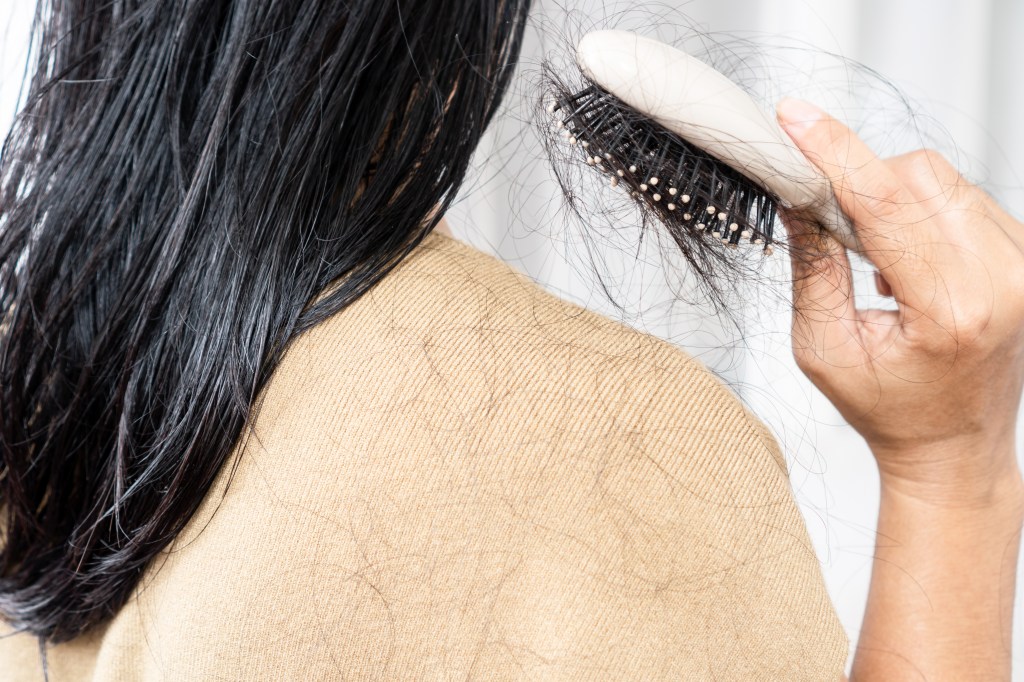For those with a hair care routine, a brush is an essential tool for maintenance days – but washing hair while wet can cause more harm for the better.
Ordinary habit can permanently weaken hair on a “molecular level”, according to Dr. Mehmet Erdogan, co -founder and hair transplant surgeon at Istanbul’s Smile Hair Clinic.
This can lead to increased fracture and thinning over time. A 2022 study by the University of Manchester reflected this, finding that moisture may change that it is a response to stress.
“When the hair gets wet, it undergoes significant physical changes that can affect its ability to treat stress from washing,” Erdogan said in comments shared with Fox News Digital.
“Water makes the hair shaft swell, stretch the cuticle and makes it more susceptible to fracture.”
Although it is shown that wet hair stretches more than dry hair before breaking, Erdogan explained that this means that the hair is more flexible and elastic.
“The opposite is true – this extension damages the inner structure of the protein, leading to weaker hair over time,” he warned.
“The brush is drawn to swollen, weakened beings, making them lie beyond their capacity. As they dry, they do not return to their original state and remain damaged at a structural level.”
Ashley Dimatteo, owner of Ashley Lauren Beauty Lounge in Westchester, New York, told Fox News Digital in an interview that the salon saw “definitely” damage from wet hair washing.
“Wet hair is more fragile, and rough washing can cause fractures,” she said. “But rarely only one issue – here is either frequent damage comes from factors such as stress, hormones, heat style or chemical treatments.”
Brianna Delvecchio, a color specialist and hairdresser in Dimatteo’s salt, agreed that wet hair washing can cause, especially while doing this roughly or with a wrong tool.
Factors such as stress, diet, hormones and excess processing can also play a role in hair damage, she confirmed.
Those who have finally treated and chemically hair – whether colored, allowed or smooth – are “particularly sensitive” for wet washing damage, as their protein structure is “already changed”, noted Erdogan.

Tips to minimize hair damage
Risks do not mean that people have to pass full washing, Delvecchio said, as not washing wet hair can result in a “knotted, mature mess”.
“Washing is needed – just make people and in the right way,” she advised.
With its salon customers, Dimatteo recommends taking a “soft access” to hair, protecting it from heat, avoid harsh washing and limiting chemical services.
“We also take time to talk about head health, nutrition and lifestyle because they play a role,” she told Fox News Digital. “And most importantly, you won’t ever feel ashamed or shy to talk to your stylist or local salt. We’re here to help.”
To reduce the risk of hair damage, experts recommend using a wide tooth comb or flexible detail brush.
“Flexible ovens are excellent for detail without much tension,” Delvecchio said. “It is a strong option for all types of hair, as long as you still be.”
The salt owner also suggested using a product left to help soften and hydrate the hair, making it “very easy for the comb to slip”.
“The technique matters, too – always start from the bottom and gently work on your way,” Dimatteo advised.
Adding heat to wet hair can “multiply damage”, Erdogan warned.
For those with straight hair, it is best to allow it to dry in part from the air before combing, according to the hair transplant surgeon.
The American Association of the Dermatology Academy also recommends this approach.
Delvecchio advised to go “easily in your hair” in general, especially when it is wet.
“Use heat protectors, reduce heat in your tools, avoid overlapping whitening and continue with clothes,” she suggested.
“Also, apply it regularly (wet or dry) to prevent tangles and fractures,” it continued. “The hair is delicate, but with the right habits, they can stay strong and healthy.”
#Washing #wet #hair #longterm #damagehere
Image Source : nypost.com